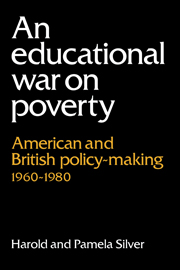1 - Introduction: a proper complexity
Published online by Cambridge University Press: 03 October 2009
Summary
Poverty was ‘rediscovered’ and became a serious issue in public debate and policy in Britain in the late 1950s and in the United States in the early 1960s. In both countries after the Second World War there was a popular and strongly held view, by governments as well as by political and social scientists, that poverty had either disappeared or had survived in ‘pockets’ or in highly specific cases which would be eliminated either by an expansive, affluent society or, in the British case, by careful ‘welfare state’ planning. In the late 1950s, British social administration researchers, largely associated with Richard Titmuss, began to thrust their rediscovery of poverty into public consciousness, as did a number of American writers in the period of the Kennedy administration in 1961–3 on the basis of investigations mainly of Appalachia and the urban ghettos. Taking different forms and with different emphases, there was also mounting concern with the concept of inequality, related in the United States primarily to race and civil rights, and in Britain to social class, the latter increasingly centred from the 1950s on divisions and inequalities in secondary education.
Varying amounts of attention and different solutions were applied to poverty and inequality in the two countries, but both concepts reentered public debate as signals that the optimistic economic and social forecasts of the late 1940s and 1950s had not yet been fulfilled. The criteria by which poverty had been measured, and had been assumed to have been severely diminished, began to be challenged.
- Type
- Chapter
- Information
- An Educational War on PovertyAmerican and British Policy-making 1960–1980, pp. 1 - 10Publisher: Cambridge University PressPrint publication year: 1991



